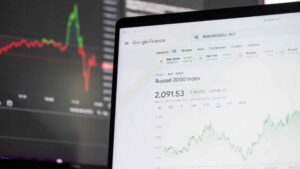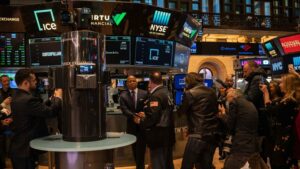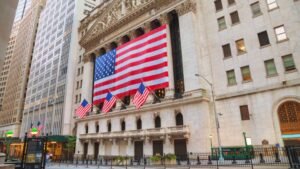FX markets started the week slow with the US Labor Day holiday, but all eyes are now on the data-heavy days ahead that could bring heightened volatility.
With US markets reopening today, volatility across FX and commodities continue, which are driven by US Fed dovish expectations, US jobs data, European economic data and geopolitical developments.
US Dollar Rebounds
The US dollar rebounded after declining for five days. The currency fell to a one-month low at 97.552 with the index declining 2.45% in August. Traders have priced in an 89.7% chance of a 25 basis-point rate cut from the Federal Reserve in their September meeting due to a weak labor market report for July, which has sparked concerns among markets and Fed policymakers. ⁽¹⁾
The upcoming Fed meeting will be heavily influenced by the labor market data that is due this week. Nonfarm payrolls for August is expected to come in at 78k, above the previous actual number, with the unemployment rate expected to rise to 4.3%. ⁽²⁾
The US dollar could also be impacted by the Supreme Court rulings on US President Trump’s tariffs, who recently described them as illegal. We also had the court hearing of former Fed Governor Lisa Cook’s request for a temporary restraining order to block Trump from removing her from the role.
The hearing ended without a ruling. Trump now faces the threat of a defeat as it seems questionable whether the grounds for Cook’s dismissal are legally valid. ⁽³⁾
Euro and Pound Fall on UK Bond Market Crisis
The euro and the pound removed last week’s gains which were made due to a dovish Fed and anticipation of ECB President Christine Lagarde’s speech on Wednesday, September 3rd. The reason for the major decline is due to the bond market concerns in the UK where bond yields rose to their highest levels since 1998, putting pressure on Prime minister Keir Starmer’s government to take steps to regain confidence of markets.
Eurozone PMI data rose to 50.7, exceeding forecasts of 50.5, indicating expansion in the region. France’s manufacturing PMI showed growth for the first time since 2023. However, Germany’s PMI declined to 49.8, showing contraction. ⁽⁴⁾
ECB President Lagarde has previously warned of risks to the global economy from Trump’s tariffs and threats with Fed independence and expressed concerns on government collapses, especially the public debt crisis happening in France with a looming confidence vote.
In the UK, house prices fell 0.1% month-on-month in August, missing forecasts of 0.2% growth, while mortgage approvals rose to 65,352, surpassing expectations. UK manufacturing PMI dropped to 47.0 in August, below the forecast of 47.3, indicating ongoing weakness. ⁽⁵⁾
Political risks are also rising, as the rise in borrowing costs is another headache for the government ahead of an autumn budget where Chancellor of the Exchequer Rachel Reeves is under pressure to find savings or raise taxes to improve the UK’s fiscal position.
That may prove politically difficult, given the government had to U-turn on welfare reforms after a rebellion among lawmakers. Starmer announced a raft of changes to his Downing Street team on Monday in an a bid to reset the government and secure more influence over economic policy. ⁽⁶⁾
Yen Removes Gains Made in 2-Weeks
The Japanese yen declined as markets continue to be divided over the timing of a rate hike from the Bank of Japan, despite gaining more than 2% in August. Speculators are pricing in a 40% chance or less of a 25-basis point hike. ⁽⁷⁾
Gold on Track to Retake $3,500 Alongside Silver’s Rise
Gold surged to a five-month high, reaching all-time highs at $3,500 per ounce, driven by lower US interest rate expectations and geopolitical risks such as the Trump-Cook feud and the Supreme Court ruling on Trump’s tariffs. Spot silver jumped 2.3% to $40.60 per ounce, its highest since September 2011. ⁽⁸⁾
Other factors driving precious metals, including a Russia-Ukraine peace deal, remains elusive with both countries carrying out strikes on each other, while Germany and France push for secondary sanctions on nations supporting Russia’s invasion, including major buyers like China and India. ⁽⁹⁾



